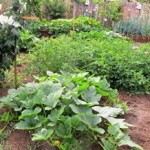This Year, Grow A White Garden
Vita Sackville-West, prolific English author, poetess, and avid gardener described her now-famous white garden at Sissinghurst in Kent as a garden of gray, green, and white. She wrote a column about it in the Observer that was published January 22, 1950 and republished in 2009. See, https://www.theguardian.com/lifeandstyle/gardening-blog/2009/jan/22/gardens
Vita Sackville-West hoped her experiment would be successful. Still, she opined that a garden can look well enough on paper but can fail “after you tuck your plans into the soil.” You can only hope it will turn out well.
Indeed, her garden succeeded as she had hoped. It has garnered worldwide fame as the “white garden at Sissinghurst,” one of the most visited areas of the castle gardens. Her vision for it was quite simply a fairly large bed divided into halves by a paved walkway that ended with seating for visitors to sit facing the garden. Rising at their backs would be a really high hew hedge.
She envisioned many fragrant and ravishing florals sticking up through gray-green foliage. Her chosen blooms for this white garden, best experienced beneath a full moon for its appearance and scent, included dozens of tall trumpets of white Regale lilies, peonies, and irises, in hues of white to the palest creamy yellow.
In creating her garden, Sackville-West was manifesting a hoped-for result. She considered her garden as an amusing exercise and encouraged others to experiment in their gardens as well, according to their own “taste” and “opportunities.”
If you’d like to create a white garden, search for plants in white-blooming varieties and choose some for their fragrance: cleome (attracts pollinators), dianthus, primrose, evening stock (a scented annual whose fragrance intensifies at twilight), lily, phlox, night-blooming jessamine (possesses an intoxicating scent), tuberose, geranium, and white rose.
For gray-green foliage under these plants, tuck in lambs ears, snow-in-summer, or artemisia (this genus has between 200 and 400 plants). Or, use the plants Sackville-West chose for edging–specifically, Dianthus Mrs. Sinkins and Stachys Lanata).
For a small space, why not create a circular bed. Plant a fragrant, white rose, perhaps Claire Austin, named for the English rose breeder David Austin’s daughter. In a circle around the rose, plant yarrow with silvery-gray foliage. In the next layer (furthest from the rose and shortest) use bacopa, alyssum, or other white edging plants to create the outermost circle around the yarrow. The trio of layers in constant bloom creates a lovely bed with the appearance of a fairy ring–dramatic under the moonlight.
________________________________________________________
If you enjoy reading about gardening, keeping bees and chickens, and other rural topics and you like a good mystery, check out my Henny Penny Farmette series of cozies, including A BEELINE TO MURDER, THE MURDER OF A QUEEN BEE, and A HIVE OF HOMICIDES.
- All available online and in bookstores everywhere
A HIVE OF HOMICIDES
MURDER OF A QUEEN BEE
A BEELINE TO MURDER
Enrich your reading pleasure by putting on your muck boots and stepping into the world of Abigail Mackenzie and her coterie of friends in charming Las Flores, California where the local movie theater still serves up homemade pastries and locals gather at the only watering hole in town, the Black Witch.
Besides offering a cozy mystery to solve, these books are chocked full of
1. Delicious recipes
2. Farming and gardening tips
3. Facts and tips for keeping bees and chickens
4. Tidbits of farm wisdom
________________________________________________________
My newest nonfiction books include:

More than 150 rituals for sound mind, strong body, and meaningful connections to the people around you
- Anyone can find peace, clarity, and focus…all it takes is a moment
Helping a Kitchen Garden to Grow in Clay Soil
Under the searing summer sun, the clay soil of my farmette will grow amazing pin oaks, white oaks, and pine trees. But for a gardener like me who wants to grow vegetables and herbs, clay soil frustrates and challenges.
Before planting next year’s kitchen garden in a new area of the property, I’ll have to change the soil structure now. This will take time and a lot of effort, but it will pay huge dividends over the long term.
Here are a few things things a gardener can do to improve clay soil.
1. A few weeks before working an area, mulch the area with an eight to ten-inch layer of wood chips to help the soil retain moisture and regain structure.
2. Use a pickax to break up the soil to the depth of 10 inches and work in composted organic material.
3. Avoid working the soil after a rain or when the ground is wet because the soil will ball up into unwieldy clumps.
4. Work in sand or perlite to create more pore space for aeration and drainage. Beware of adding too much sand; the soil becomes like concrete. Ideally, the soil should have roughly fifty percent pore space with minerals and organic matter filling in the rest.
5. When not growing plants, sow a cover crop of legumes to reduce weed germination, prevent erosion, and help water penetrate deeply into the soil. A legume cover crop provides plant matter that can be turned back into the soil or mowed, leaving the plant’s bio mass in place. Legumes fix the nitrogen in the soil that will nourish the plants of the kitchen garden.
6. Repeat all of the above steps annually and dig, turn, rake, and water. Over time, the soil should support healthy roots of plants and give you a robust kitchen garden that will provide many tasty vegetables and culinary herbs.
____________________________________________________________________
If you enjoy reading cozy mysteries and are interested in gardening/farming topics, keeping bees and chickens, or creating delicious recipes from heirloom vegetables and herbs, check out my Henny Penny Farmette series. All are available from Amazon, Barnes and Noble, and other traditional and online bookstores everywhere.
Coming 9/27/17
PUBLISHERS WEEKLY 08/14/2017 noted:
“Lester’s sensitive portrayal of Abby’s struggle with her wounded psyche raises this traditional mystery above the pack.”
See more at: https://www.barnesandnoble.com/w/a-hive-of-homicides-meera-lester/1125424538?type=eBook
 Facebook
Facebook Goodreads
Goodreads LinkedIn
LinkedIn Meera Lester
Meera Lester Twitter
Twitter











